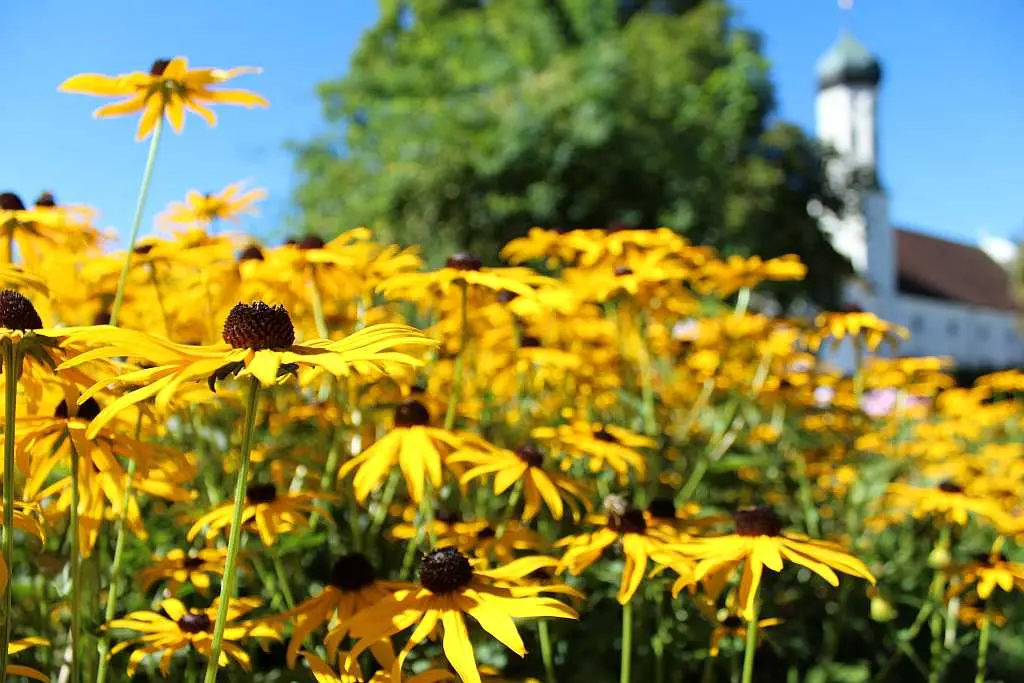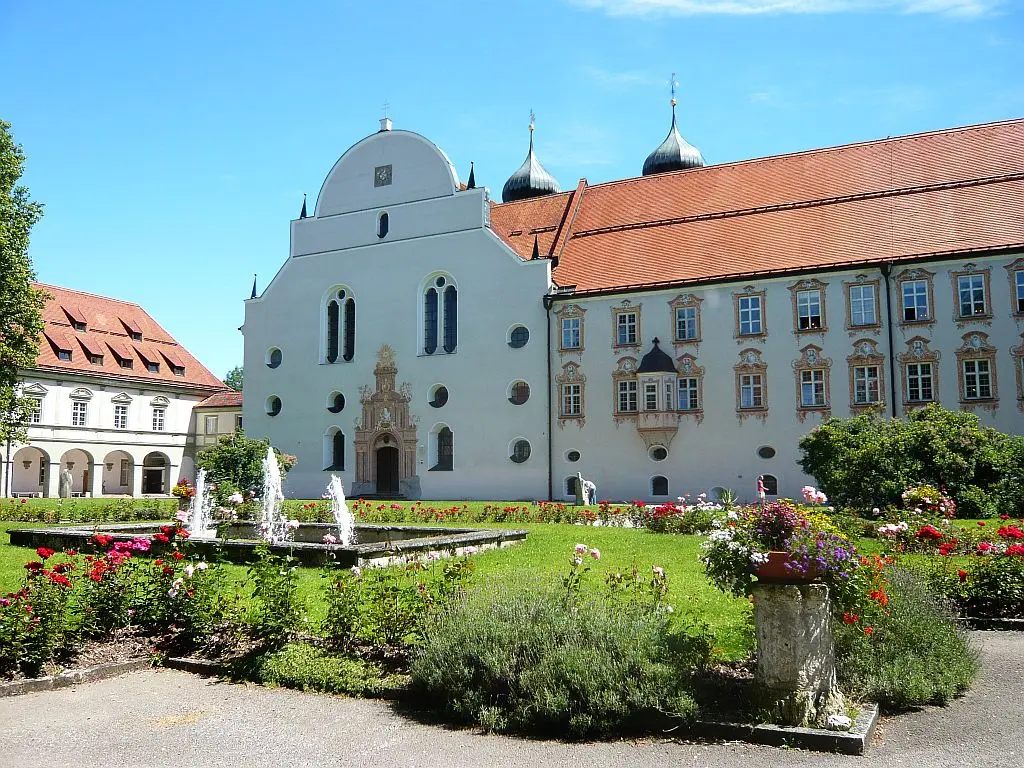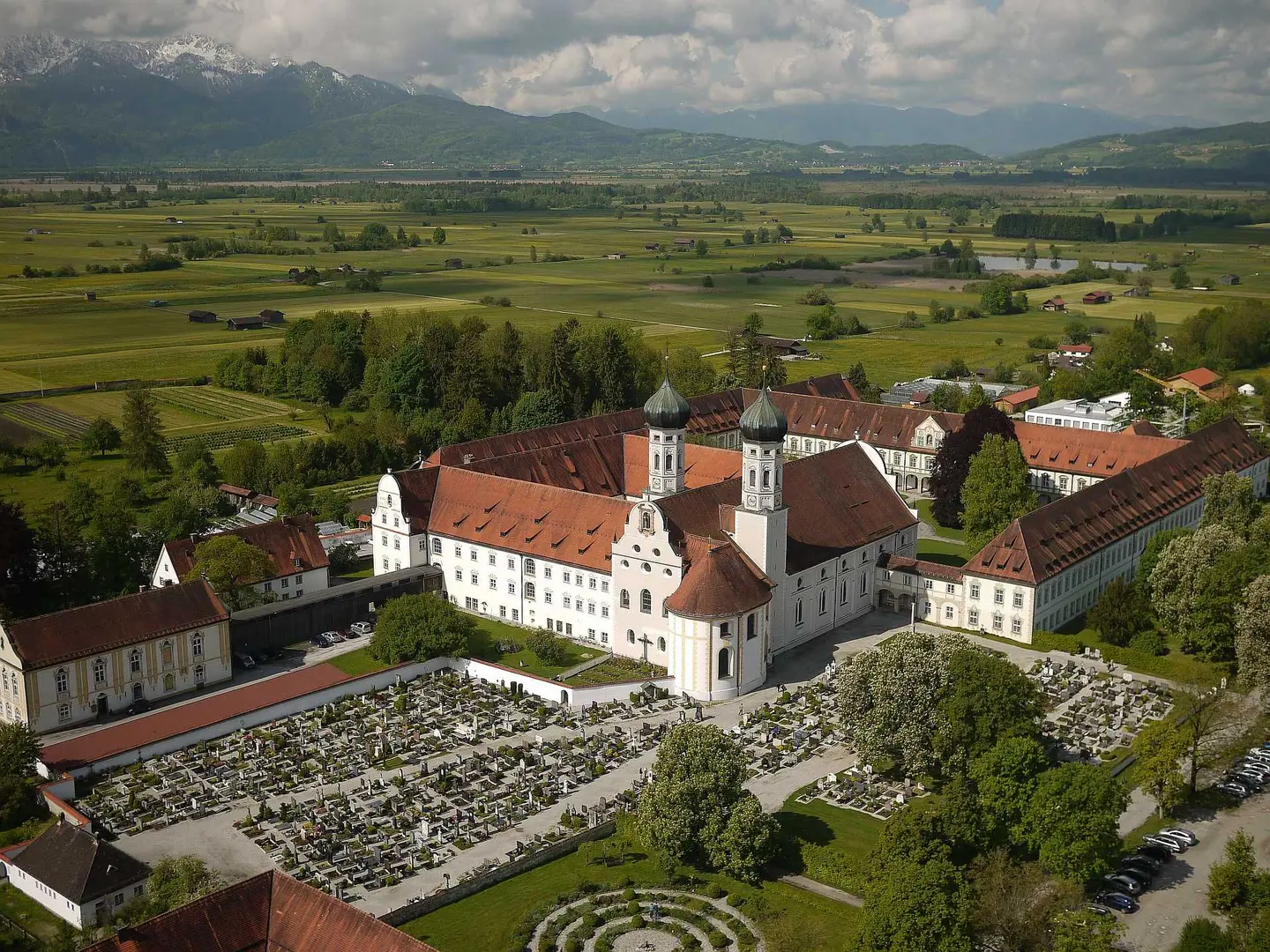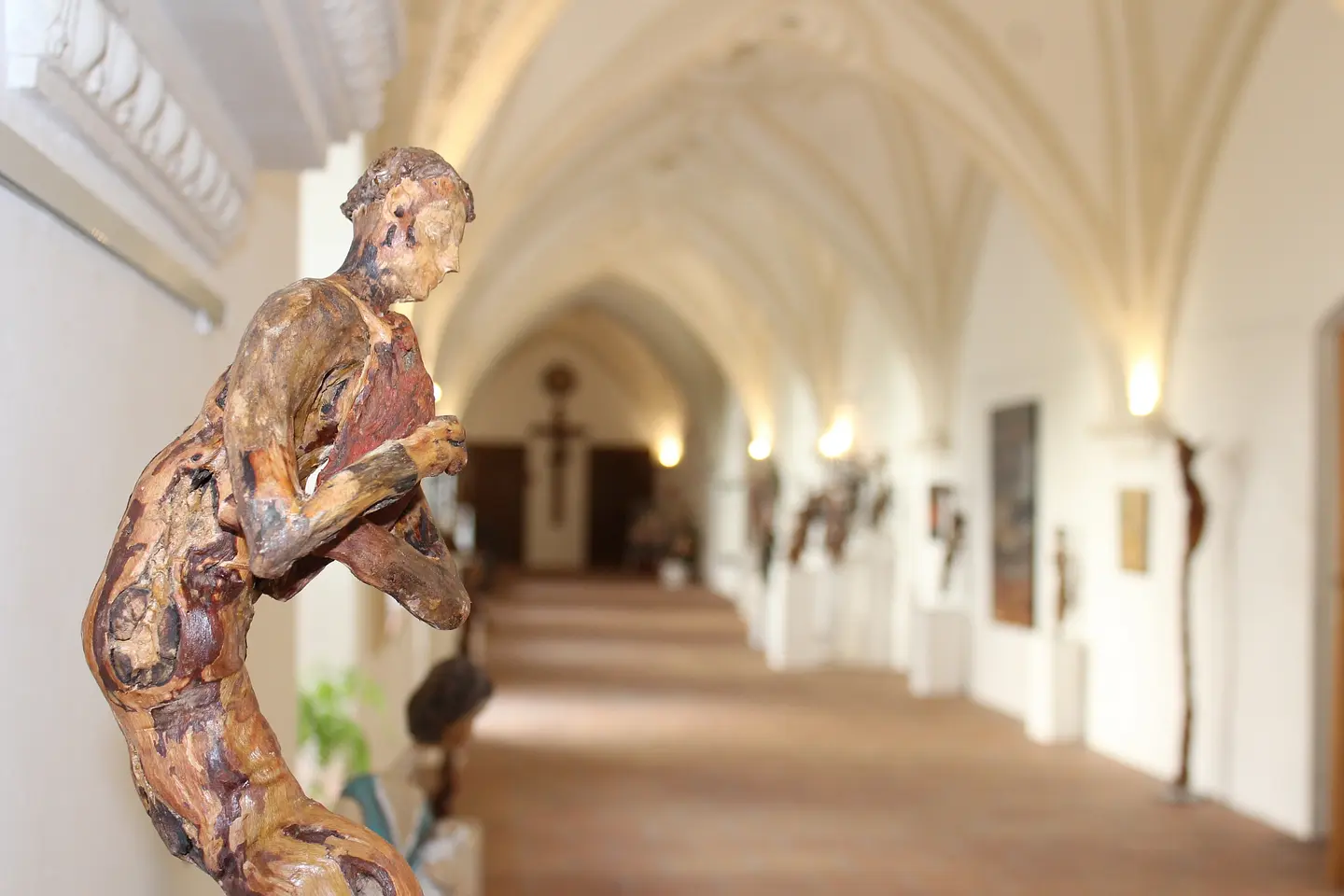Monastery area not completely accessible due to the damages of the hailstorm in Augst 2023!
History
The founding of the Monastery goes back to 740 and was assisted by St. Bonifatius. It is one of the oldest Benedictine Monasteries in Bavaria. After being destroyed by the Hungarians in 955 it was rebuilt with the support of St. Ulrich of Augsburg. In 1031 the Estate was once again colonized by the Benedictines from Tegernsee.
The Monastery went through an extended period of prosperity and wealth. Education, arts, science and the cultivation of crops was developed. At 1250 the Monastery’s library counted about 250 handwritten documents. The most famous one was the “Carmina Burana”. Where this significant collection of secular and sacred songs from medieval times was written and how it was brought to the Monastery, has not been discovered yet. “Carmina Burana” became known all over the world as Carl Orff set it to music in 1935/36.
An immense fire destroyed the central estate of the Monastery in 1490. After the “30jaehrige Krieg” (30 Years' War), another beneficial period started. The Secondary School (“Gymnasium”) with priorities in music, maths and botany was reopened and the Bavarian Congregation of Benedictines’ University for Theology was set up. P. Karl Meichelbeck (d. 1734) and the educator and theologian P. Aegidius Jais (d. 1822) strenghthened and built up the name of the Monastery as a place of spiritual life, education and science.
The Baroque Monastery Estate
From 1669 onwards, the Monastery Estate was built in baroque style. Great artists of the time like Georg Asam, Johann Baptist Zimmermann, Johann Michael Fischer, Ignaz Günther, Johann Michael Feuchtmayer amongst others made their contribution and created the Monastery as we know it today.
The Economy Building (“Maierhof”) was one of the most impressive agricultural buildings of the baroque decade. It was also the centre of the Monastery’s extensive farming activities and a truly exceptional enterprise for its time.
Termination of the Monastery
Secularisation in 1803 set an end to the beneficial work of the Benedictines, which had lasted for about one thousand years. The Monastery became secular-private property and from 1808 until 1818 the famous scientist Joseph von Fraunhofer worked here. After becoming a state owned property in 1819, the buildings were used as barracks, a military base, a home for disabled persons, a prison and a recovery centre for soldiers.
Finding of Carmina Burana
Carmina Burana, Latin for "Songs from Beuern" (short for Benediktbeuern), is the name given to a manuscript of 254 poems and dramatic as well as satiric texts from the 11th and 12th century. They were written principally in Medieval Latin.
The manuscript was found in 1803 in the monastery of Benediktbeuern and is now housed in the Bavarian State Library in Munich. It is considered to be one of the most important collections of Goliard and vagabond songs. 24 of its poems were set to music by Carl Orff in 1935/36 and became very popular.
Beginning of a new period
In 1930 a new period in the Monastery’s history started. The Congregation of the Salesians of Don Bosco (SDB) purchased the estate. In an ongoing process of renovation the buildings were saved from going to ruin and so conditions for a new spiritual and cultural life were set. Following the ideals of their founder Giovanni Bosco (1815-1888) the Salesians of Don Bosco developed a centre for religious education and science.
Nowadays there is a university located in the Monastery where students can take a social work degree.
The “Centre for Environment and Culture” was established in the former “Maierhof” and is the Congregation’s contribution to the christians’ responsibility for creation. Nature protection, education districts with nature trails and biotopes, meditation- and herb garden as well as guided excursions offer first hand experiences to visitors. Educational training and seminars impart values and ecological learning to guests.




Guided tours
Guided tours at the monastery with basilica and chapel in German language:
| April till August | Tue, Thu, Sat | 14:30 |
| Sun | 13:00 + 14:30 | |
| September, October | Tue, Thu, Sat, Sun | 14:30 |
| November till March | Sat, Sun | 14:30 |
Price: € 4.50 p.p.
Meeting point: monastery shop at the inner courtyard
Guided tours for groups in English language are available only with advance reservation per fax +49 8857 88199 or e-mail: fuehrung@kloster-benediktbeuern.de
Further information: www.kloster-benediktbeuern.de/Kloster/Fuehrungen